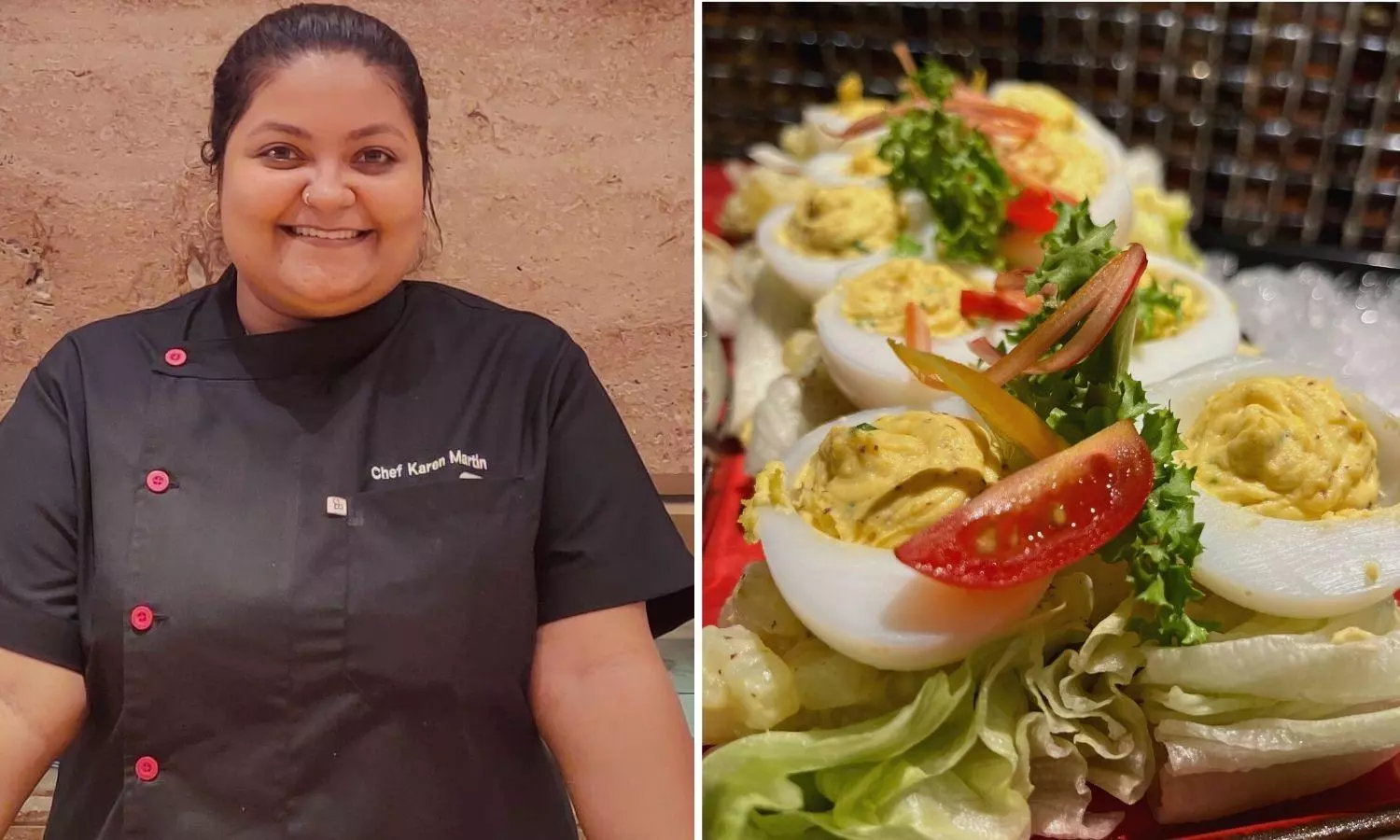Tracing our way from history to the present as we savour the subtle flavours of Anglo-Indian cuisine
Join us as we attempt to uncover the delectable journey of Anglo-Indian cuisine from the British Era to the present, along with Karen Martin
- By Natasha KitturLoading...
- | 26 Jan 2024 7:43 AM GMT
 X
X
The British ruled India from 1858 to 1947, as everyone already knows, given the fact that British Raj is the crux of every high school's history book. During these 200 years, India would witness a major transformation culturally, economically and socially. Through grades eight to ten we are all taught of the atrocities of the British on Indian civilians and the incalculable plunder they looted from a country that was once called Sone ki Chidiya (literally translating to Golden Bird while inferring that India was a land of great wealth). It is also during these years India got her first railways, a deep study into modern warfare and an insight into British culture and tradition. Even after declaring India as an independent country on 15th August, 1947, there still remained a particular sect of people, who would identify themselves as Anglo-Indians and would pride themselves for being an amalgamation of all things Indian and British.
Before the British Raj, India remained a popular hub for trade, owing to our spice or the textile and handicraft industry, just to name a few. Even today when someone says the word Indian cuisine, the first image to pop up in your mind would definitely be of a dish that would be a vibrant and fiery red. This image just goes to show that Indian cuisine, for as long as we can remember it, has always been a medley of robust spices and bold flavours. Post 1858, when the British Rule had completely set in, a new cuisine began to rise to the forefront of Indian gastronomic fare: the Anglo-Indian cuisine. But what exactly was so special about the Anglo-Indian affair and what was the need for a whole new cuisine in the already diverse universe of Indian cuisine? ‘Anglo-Indian cuisine itself is one of the first examples of fusion food or cuisine, a genre that is now becoming very popular and on the rise in the culinary world. In the present day, it is safe to say that the cuisine is gaining popularity across the globe with dishes like Mulligatawny soup, Vindaloo and Ball Curry finding their place on the global map’, said Karen Martin, Founder of House of Anglo, who has now established a successful enterprise on the backdrop of a rich and deep Anglo-Indian history.
Anglo-Indian cuisine was a result of mixing culinary elements from India and Europe, setting the stage for a spread that would suit the palates of the Britishers. Upon asking Karen Martin what ingredients or cooking techniques characterised this cuisine, she explained, ‘The Anglo-Indian cuisine gets its flavours from spices like black pepper, coriander, cinnamon, cardamom, garam masala powder and cumin. The cuisine sports quite a liking for tanginess and most meat dishes use white vinegar and local tomatoes as a base. The use of these local ingredients adds tremendous flavour and aroma. The cooking techniques for dishes were fairly simple. Most dishes were slow cooked, stir fried, steamed, pot roasted, salt cured, sun dried and desserts were either baked, deep fried or steamed. Meat and seafood dishes required marinations, as the process added flavour to the protein’.
Colloquially speaking, a major part of the Indian crowd would deem European food to be bland, and while this statement may come from individuals who have yet to traverse the length and breadth of Europe to be able to adequately judge the taste profile of all European food, it would not be considered incorrect to at the least say that Indian food boasts a lot of aroma and spices as compared to European cuisine. ‘The British palate was not accustomed to the Indian spice level, so many culinary traditions were brought to India by British rulers to adapt to the spices and local ingredients in India. When the British first arrived in India they were known to consume bland staples like bread, rice, porridge and bread pudding. Soon, the British rulers began importing utensils to cook their food like a kadai or wok to saute vegetables and deep heavy bottomed pans to cook rice. The British palate had a massive influence on Indian food at that time and the famous Anglo-Indian chicken pot roast was one such dish born out of the influence. The pot roast recipe had a British base but the Indian cooks began adding an Indian touch to it by using whole spices like cinnamon, peppercorns, cloves and more.’
Right from the fascinating alliterative nomenclature of certain dishes—like kulkuls, doldols or ding ding—to the variety of delicacies that Anglo-Indian cuisine encompasses, this cuisine has not stopped evolving since its inception. ‘The biggest evolution that the Anglo-Indian cuisine and the community has witnessed, in my personal opinion, is that it is today being showcased as a hyperlocal cuisine in India’s evolving pop up culture. From being a cuisine that was enjoyed in the homes of a community, it is now being served at niche restaurants and five-star luxury hospitality chains. Today, many traditional dishes like a ding ding or even honey roasted ham have taken a contemporary turn to be used in salads. The Anglo Indian devilled eggs have moved on from being served as a starter to a single bite salad portion. I have even gone an extra mile to draw inspiration from food that was served at my dining table to create progressive dishes like a Salted Beef Salad with Rocket (or arugula), A Honey Roasted Ham Salad, A Ding Ding Salad with fresh Oranges, to name a few. Similarly, as we all have to keep up with changing times, we are also required to keep in mind shifting consumer preferences. For instance, a vindaloo is usually made with red meat but now the same dish is being made with pumpkin or drumstick to accommodate a vegetarian diet, or even with fish or prawns for pescatarians.’
All the way from 1858 to 2024 and counting, Anglo-Indian cuisine has come a long way. From giving the general audience a little peek into the cultures and traditions of the community, to satisfying the palates of many food enthusiasts, the cuisine has a number of nuances that a mere article of 1200 words wouldn’t be able to capture. Before roping in Karen to shed light on this matter, a topic that she has so closely dealt with all her life, we asked her about her earliest memories with the cuisine, to which she said, ‘Anglo-Indian food is everything that my childhood revolved around. My fondest memories are of the steamed bread pudding or the Custard and Pork Vindaloo that my grandmother would make for me on weekends. A memory very close to my heart is my grandmother cooking the vindaloo base. I still remember peeking into the dish over the kitchen slab and taking in the aroma. The most cherished part of the process in my memories is frying the meat, tasting for salt and then tasting again, after vinegar was added.’ This made me realise that while often we’d lose ourselves in the entirety of the spread, it is the little things, like a spoonful of vinegar or a pinch of pepper that go a long way in making a cuisine what it is. Although the cuisine itself caters to a small sect of people, at the end of it all, its delicacies prove to be culinary gems that find their place on the vast map of Indian cuisine.

Natasha Kittur
Natasha Kittur is an aspiring writer. Her love for anything with cheese and spice is profound, but a white sauce pasta always tops her list. In her free time you will catch her reading or watching crime books and shows or go on and on about psychological experiments and theories. She aims to write a book in the fictional genre someday.



